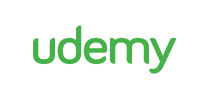1. Getting Started with Google Cloud Storage or GCS
2. Overview of Google Cloud Storage or GCS Web UI
3. Upload Folders and Files using into GCS Bucket using GCP Web UI
4. Review GCS Buckets and Objects using gsutil commands
5. Delete GCS Bucket using Web UI
6. Setup Data Repository in Google Cloud Shell
7. Overview of Data Sets
8. Managing Buckets in GCS using gsutil
9. Copy Data Sets into GCS using gsutil
10. Cleanup Buckets in GCS using gsutil
11. Exercise to Manage Buckets and Files in GCS using gsutil
12. Overview of Setting up Data Lake using GCS
13. Setup Google Cloud Libraries in Python Virtual Environment
14. Setup Bucket and Files in GCS using gsutil
15. Getting Started to manage files in GCS using Python
16. Setup Credentials for Python and GCS Integration
17. Review Methods in Google Cloud Storage Python library
18. Get GCS Bucket Details using Python
19. Manage Blobs or Files in GCS using Python
20. Project Problem Statement to Manage Files in GCS using Python
21. Design to Upload multiple files into GCS using Python
22. Get File Names to upload into GCS using Python glob and os
23. Upload all Files to GCS as blobs using Python
24. Validate Files or Blobs in GCS using Python
25. Overview of Processing Data in GCS using Pandas
26. Convert Data to Parquet and Write to GCS using Pandas
27. Design to Upload multiple files into GCS using Pandas
28. Get File Names to upload into GCS using Python glob and os
29. Overview of Parquet File Format and Schemas JSON File
30. Get Column Names for Dataset using Schemas JSON File
31. Upload all Files to GCS as Parquet using Pandas
32. Perform Validation of Files Copied using Pandas

